One of the titles released in the wake of the 250th anniversary commemorations of Cook’s arrival in Aotearoa is The Adventures of Tupaia – a riveting read that does a great deal of storytelling through its illustrations. Becky Popham talked to illustrator Mat Tait about his approach to the project, creative freedom, the state of NZ comics writers and more!
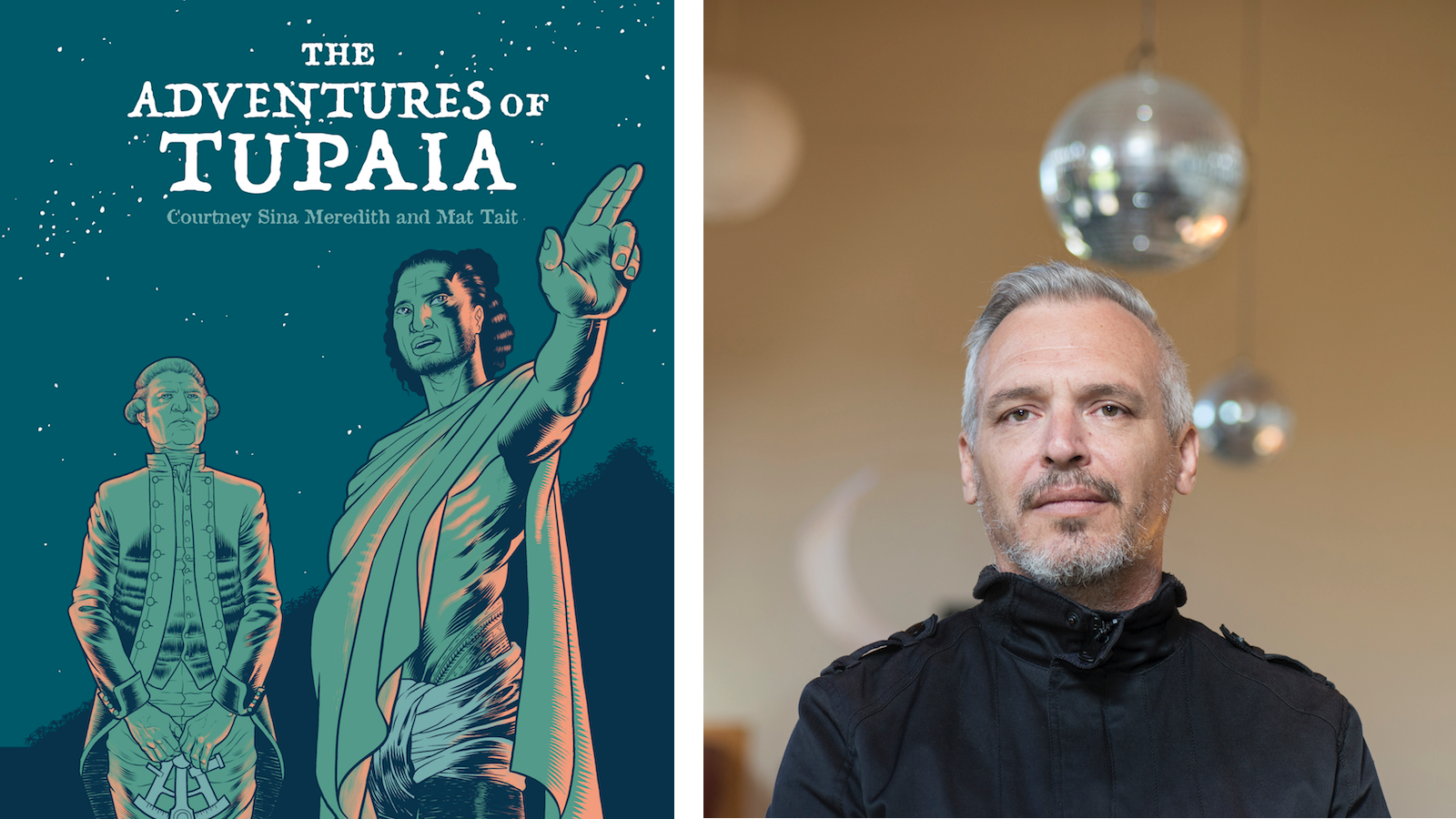
Becky: My first question to you is about the birth of this project. What was it that drew you to it? Were you approached or was it something you and Courtney [Sina Meredith] had talked about?
Mat: I didn’t know Courtney personally but I knew of her work. I was approached by Allen & Unwin. They told me what the book was about, that it was about Tupaia, and I thought ‘okay, this is in my wheel-house’ because I already knew quite a lot about him from my own reading. I’d previously read Anne Salmond’s books and had come across various accounts of Tupaia. Then Joan Druett’s book (Tupaia, Captain Cook’s Polynesian Navigator) came out and I snapped that up and read it enthusiastically too.
Allen & Unwin asked me to submit some artwork so I came up with the image that is now the cover of the book. I was trying to lay out the kaupapa of the book; to bring Tupaia to the forefront. Telling his story which, in the past, hasn’t really featured him much, it’s all been Cook.
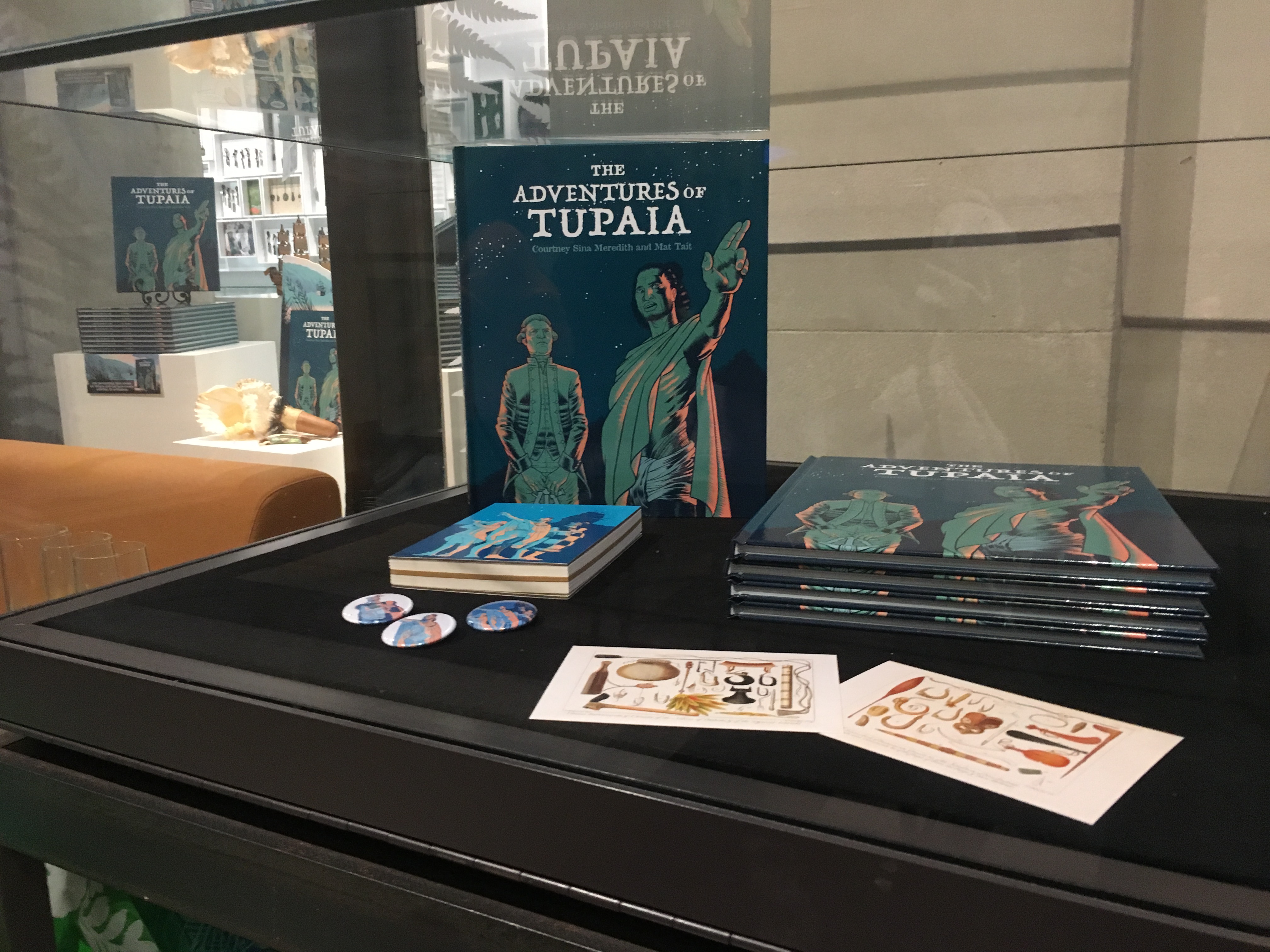
B: Are there any other stories from Aotearoa or indigenous voices you’d like to see adapted or that you want to tell yourself?
M: I’d just like to see more of that in general. Personally, there is a local pakiwaitara around Tuao Wharepapa (aka Mt Arthur) which is the major maunga, maungatapu, in my area, Motueka. There’s a story that revolves around that maunga which I’ve been talking about doing for a while. I’ve spent time collecting various accounts and I’d really like to get around to doing that in comic strip form.
Michael Brown and I – we previously worked together on the book Heading Dog Who Split in Half – would both like to do a follow up to that. I’d like to do both English and te reo Māori versions of it. I’m quite involved in Te Ataarangi ki Te Tauihu (a branch of Te Ataarangi) at the top of the South Island so that kind of thing would make a great local resource.
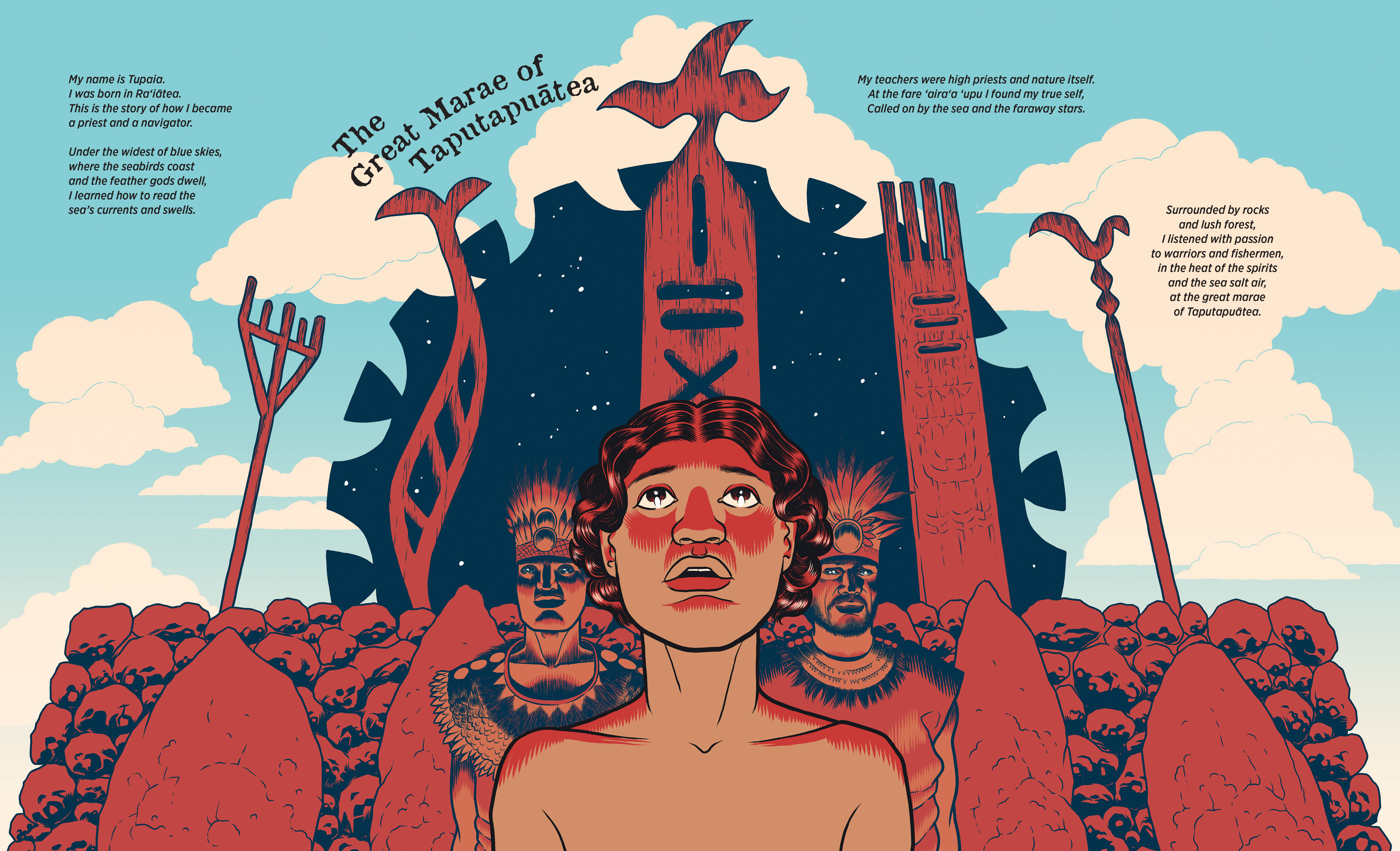
B: With the Tupaia book in particular, as a freelance artist, were you free to do what you wanted or were their constraints put on you?
M: It was pretty good, actually. I was largely free to do what I wanted. Often with contract work what needs to be on the page is very prescribed and even the layout of the book is already done before you get your hands on it. You have very little say on where the pictures go, how big they are, what they show etc. Aside from Courtney putting some general guidelines or text here and there, I was kind of left to my own devices; in terms of the layout of the page and how many pages. The comic book touches were more me shoehorning my interests in which they were totally fine with. A&U had said from the start that if I wanted to do some comic strip stuff then that would be great.
The idea was always that the story would not take a traditional approach, we could do it in whatever narrative style felt appropriate for particular parts of the book. You can see that in how Courtney treated some parts in verse, other parts in more straightforward prose narrative. Particularly the opening and closing sequences there were not strict narrative dictates to adhere to so in the spirit of her writing, I could let it visually take me where I needed to go. There was hardly any editorial interference so that was fantastic. The only things I really had to take into account were the historically accurate details.
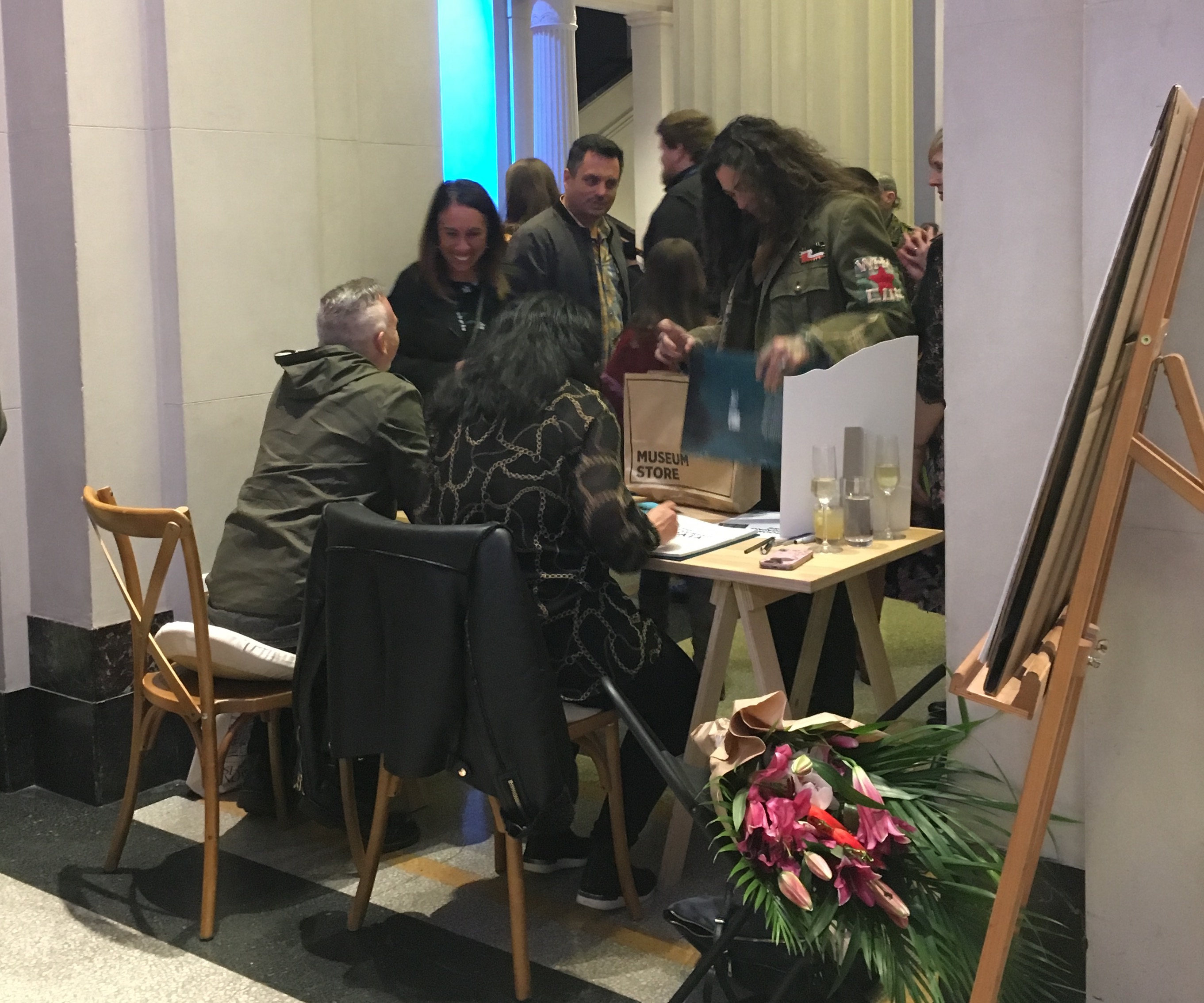
B: With graphic novel readership growing and expanding, especially amongst children and young adults, where do you feel NZ comics and comic book artists sit on the world stage?
M: There are certainly individual comics artists who have gained some notice on the world stage. Dylan Horrocks leaps immediately to mind. Sarah Laing’s Mansfield and Me has gotten some overseas attention too. Really, we’re off the radar, but New Zealand is an interesting country for a lot of people around the world and that’s something that could be built on and could take off at some point. For instance, we were doing Heading Dog for a New Zealand audience (and for ourselves) and there’s a sense that it’s quite parochial but then down here in NZ we’ll happily devour interesting things from other cultures, something that may be very specific to those cultures and yet we find something in them. So why couldn’t we start to spread? I’d certainly like to see that.
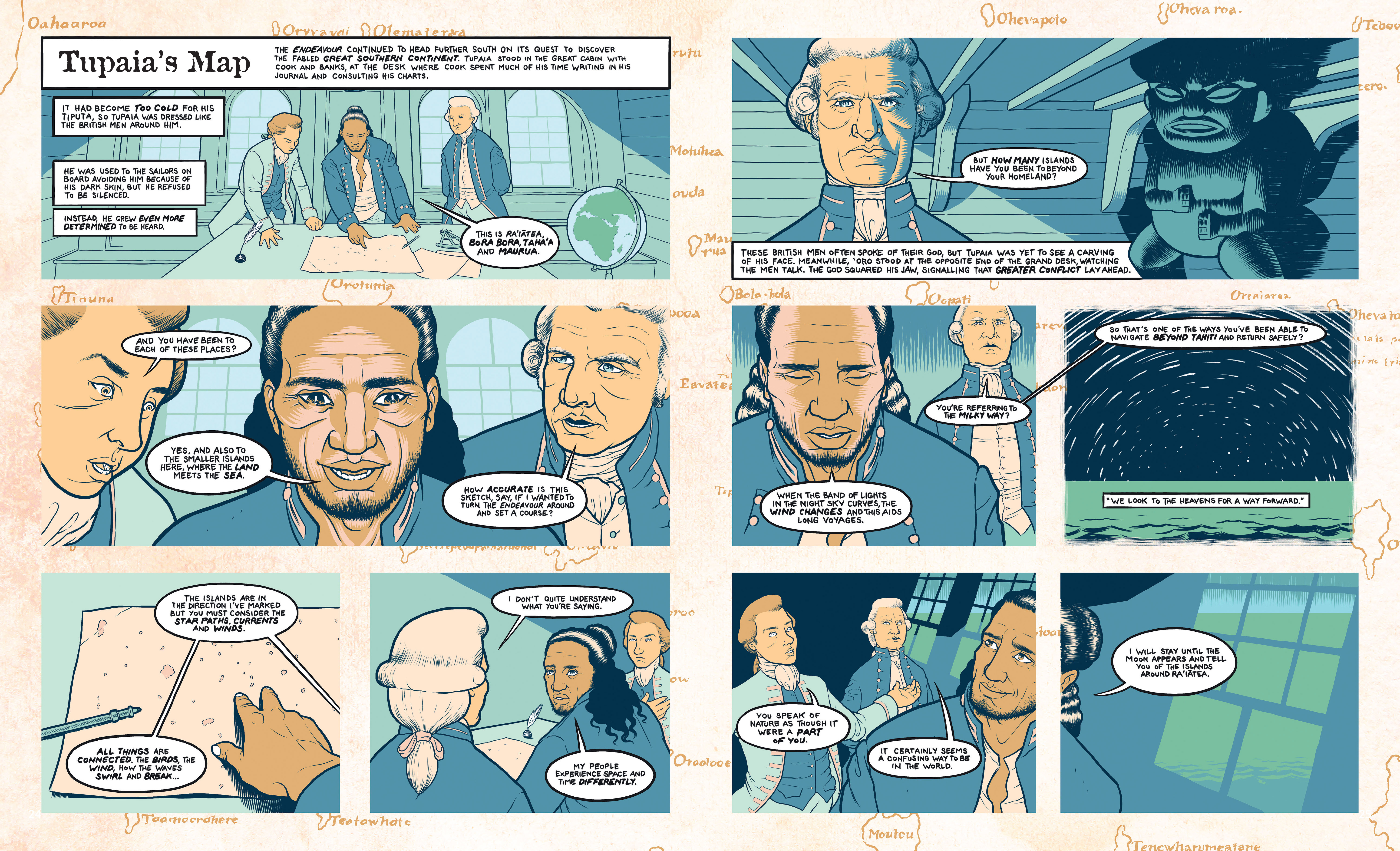
B: Is there any advice you wish you had given as an up-and-coming comics artist? A ‘dang, I wish I’d known that’ kernel of knowledge you would tell your 15-year-old self?
M: I think it would probably be ‘don’t be precious’. As in, you’ve got to do the mahi. That’s it, you know? It’s no good waiting for inspiration to strike. You’ve got to force it to show itself. You’re not working in some rarified, abstract realm of capital A for Arts. You’ve actually got to get down and put pen to paper and see what happens. That’s certainly what I’d tell my 15-year-old self, and it took me a long time to realise, just do the mahi.
B: Circling back to books – do you have any favourite books, adults or kids, that you like to revisit alongside your ‘to-read’ pile?
M: I’ve always got a ‘to-read’ pile going. It’s backing up at the moment. I was hoping to use this time away to catch up. Which I had done a little but then I see books on other people’s shelves where I’m staying and I abandon the stuff I’m supposed to be reading and start reading that.
In terms of go-tos or books I tend to re-read I’ve got my comfort books that I go back to. Particularly if I’m feeling low. I really love Tove Jansson’s Moomin comic strips. I love those to death. I read and re-read them. I go back to Terry Pratchett again and again. I don’t know how many times I’ve read each of the Discworld novels. My other big one I go back to is Iain M. Banks. Particularly his Culture novels – I’ve read all of those several times as well. These days I tend to read history, often Aotearoa history.
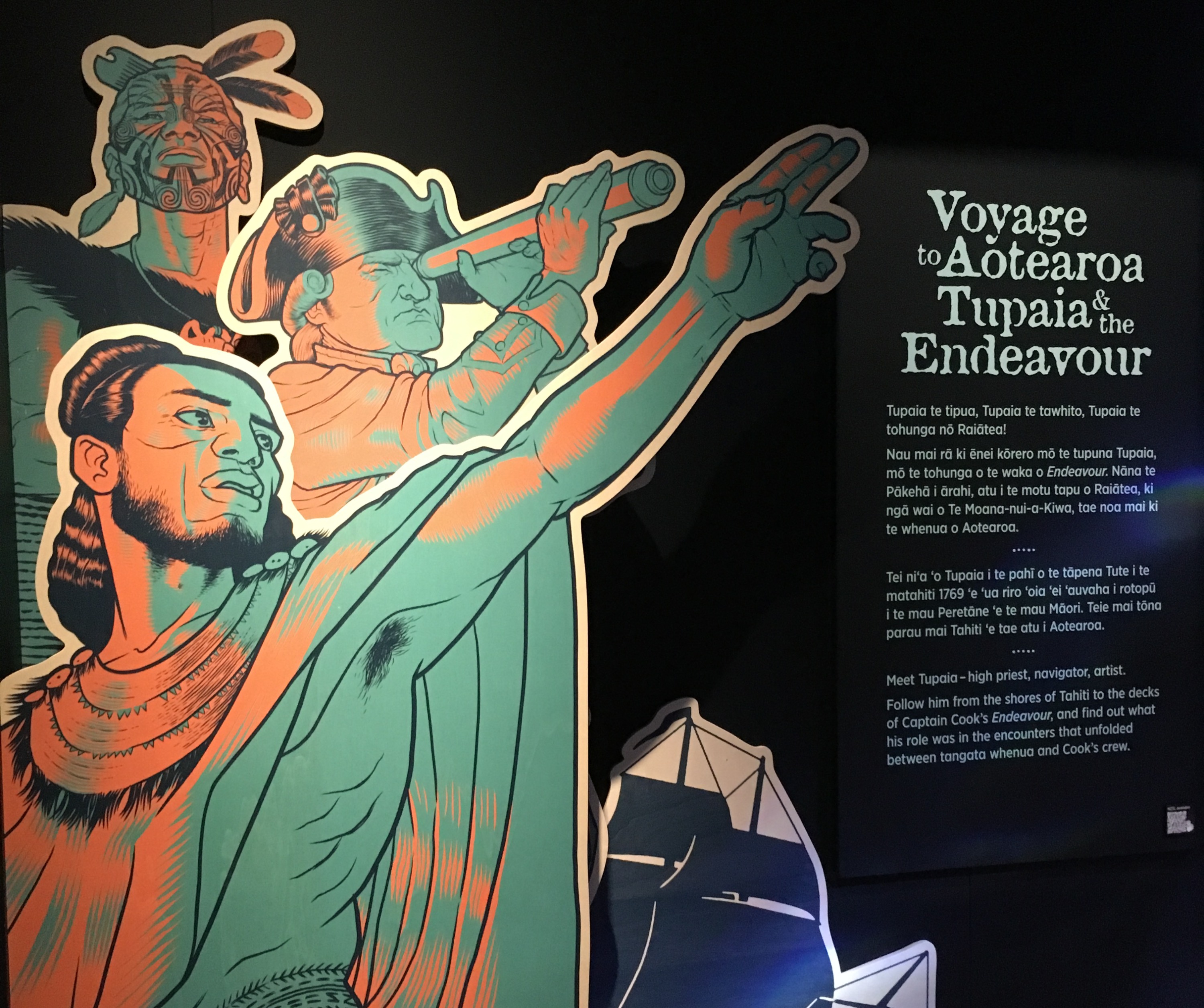
B: Is there a New Zealand book that you would pick for someone, perhaps visiting Aotearoa from overseas, where you go ‘here, you have to read this’?
M: Someone from overseas, I don’t know. But someone from this country, I would tell them to read The Great War for New Zealand by Vincent O’Malley. For many New Zealanders, particularly Pākehā New Zealanders, it’s a huge area of ignorance. If you’re reading it from that place, and I’m not pointing fingers, it’s revelatory. I mention that in particular because I’ve read it fairly recently, it’s such a wonderful book. In fact, I’ve just been in the Waikato and have done a bit of a drive around with my mother to some of the significant sites. That’s been really interesting and moving.
B: Turning back towards the future, what’s next on your agenda? What projects, if any, do you have coming up?
M: I’m looking at doing some bilingual picture books. I can’t really talk too much about it. Hopefully that’ll get off the ground because te reo me ōna tikanga is a particular area of interest for me at the moment and it’s exciting to be involved in that. Doing anything to further that kaupapa: if I can do that, that would be fantastic.
This interview has been edited for length and clarity.
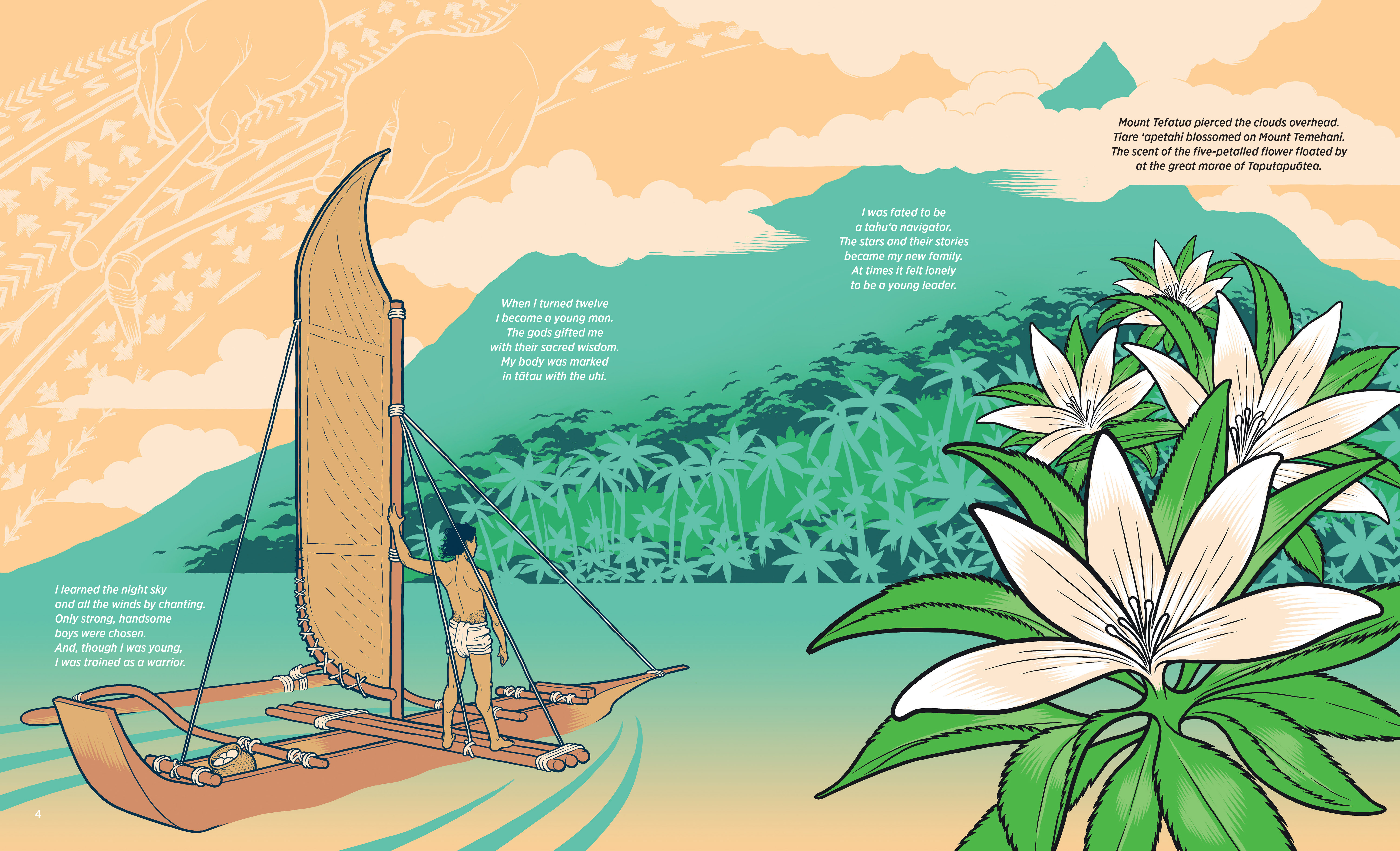
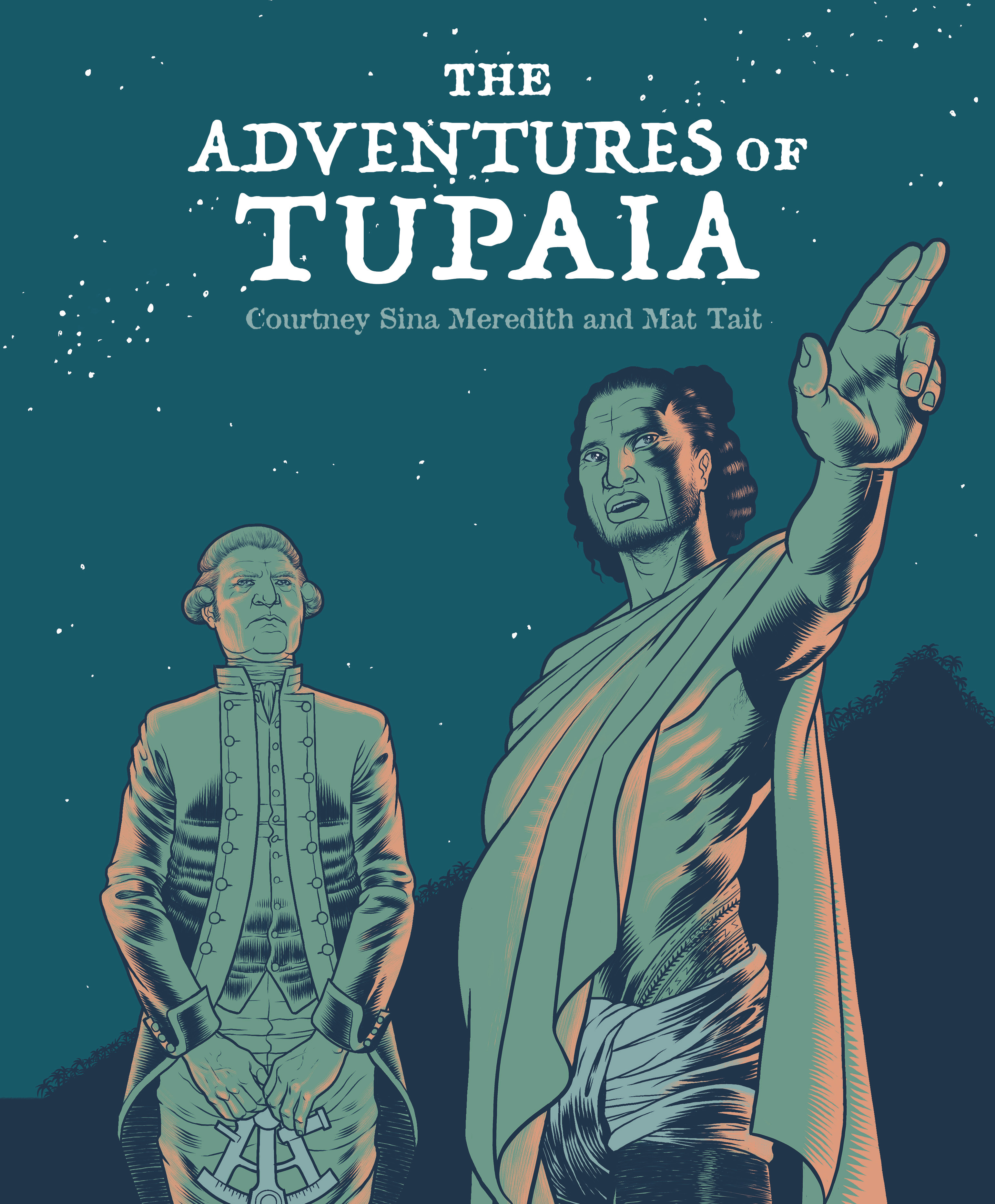
The Adventures of Tupaia
By Courtney Sina Meredith
Illustrated by Mat Tait
Published by Allen & Unwin
RRP: $35.00

Becks Popham (They/Them)
Bookseller-on-hiatus turned unexpected full-time artist. Te Whanganui-a-Tara resident for over a decade who can usually be found wandering the streets on some sort of mission, yapping at a cafe, lurking in a bookshop or power-browsing the op-shop racks.



